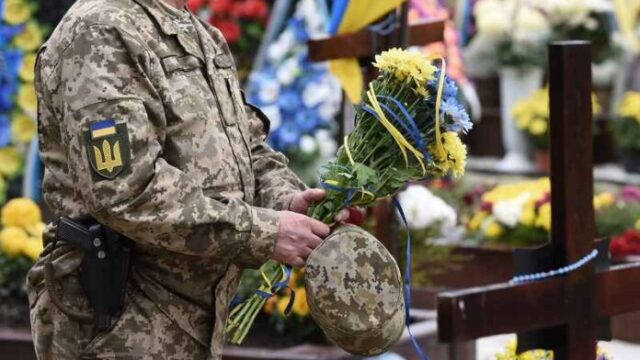The Misdiagnosed Patient is Dying

The American think tank, the Quincy Institute for Responsible Statecraft, has published an article that offers the most realistic assessment of the causes of the war in Ukraine I’ve seen since its escalation in the West in 2022. Because the author understood the causes of the war, he was able to offer a viable solution. I have therefore translated the article for your information.
Beginning of translation:
By George Beebe.
Ukraine: The misdiagnosed patient is dying
All this time, we were told it was about aggressive expansion and that the West was pursuing a deterrent strategy. That was wrong.
With the imposition of new US sanctions against Russian oil producers and the portrayal of Russian envoy Kirill Dmitriev as a “propagandist” by US Treasury Secretary Scott Bessent, the Donald Trump administration’s efforts to end the war in Ukraine appear to be hanging by a thread.
Success or failure will depend on a simple condition: you must first understand a problem before you can solve it. Unfortunately, the West has been misdiagnosing the problem it faces in Ukraine for over a decade, with increasingly tragic consequences. And the time in which President Trump can correct this misdiagnosis and the accompanying political prescription is rapidly running out.
Since at least 2014—the year of the Maidan Revolution in Ukraine and Russia’s subsequent decision to annex Crimea and support separatist fighters in the Donbass—Western foreign policy elites have viewed Russia’s military actions against Ukraine as President Putin’s arbitrary, “unprovoked” pursuit of land grabs and empire reconstruction, driven solely by Russia’s authoritarian impulses.
Based on this diagnosis, they have focused their efforts on increasing Putin’s war budget by exerting pressure on the Russian economy, inflicting high losses of personnel and equipment in his army, and turning the Russians into international pariahs. If Putin realizes that his quest for power and prestige has only resulted in weakness and humiliation, the reasoning goes, he will withdraw his invading army or otherwise agree to Ukraine’s terms for a settlement.
This diagnosis also shapes Western ideas about a post-war order. It underlies the demand that Ukraine be protected with a NATO-style guarantee under Article 5 or a European “reinsurance force” on Ukrainian territory. Otherwise, it is assumed, an agreement would only buy Russia time to regroup and invade Ukraine again.
The less this strategy bears fruit, the more its proponents push for even more economic, military, and diplomatic pressure on Moscow. Hence the calls for stricter sanctions against Russia and the lifting of restrictions on the reach and impact of Western arms supplies to Ukraine. Hence the recent proposal to equip Ukraine with another so-called “wonder weapon,” this time Tomahawk cruise missiles, which should finally bring Putin to his senses.
But this recipe has failed not because the dosage was too low, but because the architects of Western foreign policy have fundamentally misunderstood the problem they are trying to solve.
The Russian invasion of Ukraine is less a deterrent problem—that is, a replay of aggressive expansionism à la Nazi Germany—than a problem of escalation: a classic “security dilemma” situation, in which actors take measures they consider preventive-defensive, but which are perceived by the opposing side as a threat. This creates a chain of action and reaction, with each side convinced it is merely defending itself—a slide toward war, comparable to the run-up to World War I.
In other words, Putin’s primary motive for invading Ukraine wasn’t territorial greed or the desire to rebuild an empire. If that had been the case, he could have annexed the Donbass along with Crimea in 2014, when Ukraine was militarily much weaker. But he held off on doing so for eight years—despite sharp criticism from Russian nationalists and separatists in the Donbass—because he believed that retaining Donetsk and Luhansk in Ukraine would guarantee reliable domestic opposition to NATO accession.
Rather, his primary motivation was the belief that the US and NATO were steadily expanding their security policies in the increasingly anti-Russian Ukraine – steps the West saw as deterrence but Russia saw as provocation – and turning the country into a kind of “unsinkable aircraft carrier,” that is, a base for Western military and intelligence operations against Moscow.
Before the invasion, Russian representatives presented the US and NATO with draft treaties demanding a halt to further alliance expansion and the withdrawal of Western troops from Russia’s borders. The US and EU representatives rejected these demands, insisting that Ukraine would eventually join NATO and that Russia had no veto power over such a move.
When asked how he would respond to Russia’s objections to NATO expansion in Ukraine, President Biden told reporters he “wouldn’t recognize any red lines from anyone.” A few weeks later, Putin ordered the invasion.
How we diagnose the fundamental problem of the war in Ukraine is crucial. Seeking compromise is essentially counterproductive when dealing with an expansionist rogue state, as such “appeasement” signals weakness and emboldens aggressors. But in a security dilemma, doubling down on deterrence only exacerbates the problem, as each side feels reinforced by its image of an implacable enemy that can only be stopped by force—and climbs further up the escalation ladder. So, if a negotiated compromise is the only way out of the escalation spiral in Ukraine, what might it look like?
It would not begin by negotiating disputed territories, as that issue was never the primary cause of the war. It should start by addressing both sides’ core security concerns, so that neither side feels unduly threatened. The West would pledge not to admit Ukraine to NATO, not to station Western combat troops in Ukraine after an agreement, and not to supply Kyiv with long-range weapons.
In return, Russia would accept Ukraine’s accession to the EU, recognize Ukraine’s right to effective self-defense, and agree to provide Kyiv with Western weapons, training, and logistical support.
The details of such a security agreement would need to be negotiated and finalized, but such a compromise could be quickly achieved if Donald Trump’s team actively pursued it. Putin has publicly stated that Russia has no objection to Ukraine’s EU membership; during the Alaska summit, he said that “Ukraine’s security must be guaranteed as much as Russia’s” and “we are willing to work on that.” There is a growing realization on the Ukrainian side that NATO membership is unrealistic—especially since the US has repeatedly made it clear that it will not go to war for Ukraine—and that guaranteed “countermeasures” and continued Western military aid are the best they can hope for.
Such a framework agreement wouldn’t end the war immediately, but it would be an important step towards a comprehensive settlement. It would significantly facilitate the resolution of territorial disputes, the agreement on a ceasefire, and peacekeeping. And—perhaps most importantly, given the lack of mutual trust—it would demonstrate that all parties are interested in a compromise acceptable to all, rather than counting on the adversary’s capitulation.
It’s no wonder that the well-known opinion leaders in government and the media, who have dominated American foreign policy for decades, continue to reject any compromise with Russia. But their perspective is a key component of the problem that caused this conflict in the first place.
George Beebe is the Director of Large-Scale Strategies at the Quincy Institute. He served for more than two decades as an intelligence analyst, diplomat, and political advisor to the U.S. government, including as director of the CIA’s Russia Analysis and as an advisor on Russian affairs to Vice President Cheney.
End of translation
https://www.frontnieuws.com/de-verkeerd-gediagnosticeerde-patient-ligt-op-sterven
